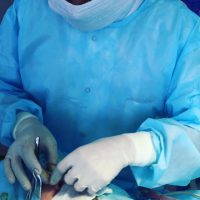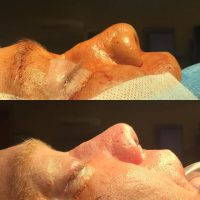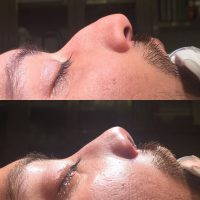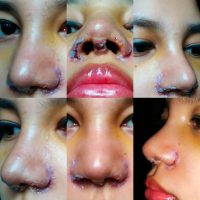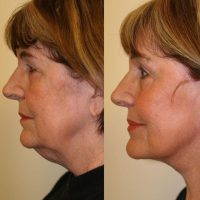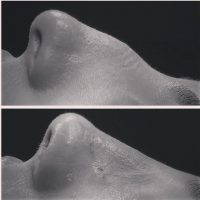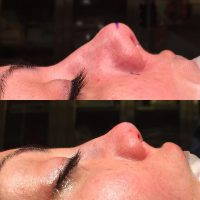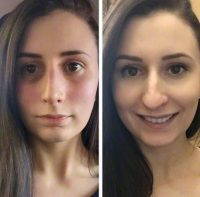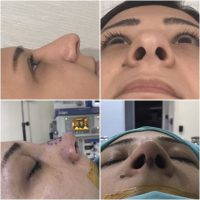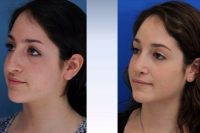Everything You Need To know About Rhinoplasty
The most popular procedure in cosmetic surgery is considered to be operations involving aesthetic correction of the form of nose. That is rhinoplasty.
Sometimes rhinoplasty is performed for medical reasons. For example, in the case where the required correction nasal septum deviation. What are the features of rhinoplasty, and what you need to know about it, preparing for surgery?
Indications for rhinoplasty
– Deviated septum.
– Congenital deformity of the nose.
– Post-traumatic deformity of the nose.
– Is bad directly result of a previous rhinoplasty.
– Large nostrils.
– Aquiline nose.
– The excessive length of the nose and its saddle shape.
– Acute or thickened tip of the nose.
– Violation of breath due to the curvature of the nasal septum (the snoring).
Contraindications to rhinoplasty
– Inflammation of the skin of the nose.
– Age less than eighteen years of age (except for traumatic cases).
– Diseases of the internal organs.
– Acute viral and infectious diseases.
– Oncology.
– Diabetes.
– The various blood disorders.
– Chronic liver disease and heart.
– Violations of the psyche.
Types of rhinoplasty
Rhinoplasty nostrils
Changing the shape of the nose with very long wings (or too wide), the addition of cartilage tissue on the nasal wings. The operation is performed under general anesthesia.
The duration is about two hours. Traces of the sutures disappear after six weeks, during which the need to protect the nose from the effects of UV rays, and the body from the load.
Septoplasty
A Revision Nose Job Is Usually Determined If There Is A Residual Dorsal Hump, The Tip Is Still Bulbous, Or There Is Still A Nasal Airway Obstruction
Turbinotomy
Surgical removal of the nasal mucosa. Surgery is indicated in disorders of nasal breathing due to hypertrophy of the mucous membrane. Sometimes it is combined with a change in the size and shape of the nose.
This is a serious, highly traumatic procedure that is performed only under general anesthesia. The recovery period is long, and you will be assigned the postoperative antibacterial therapy. Perhaps the formation adhesions and scarring after surgery.
Laser turbinotomy
One of the most “humane” procedures. It is carried out under local anesthesia. Hospital stay is not required, without wound surfaces, the mucosal recovery is very rapid.
Electrocoagulation
Electrocoagulation (EC) is a technology by electric exposure at the mucous. The duration of surgery is small, general anesthesia, rapid recovery.
Correction of the nose form
The operation is the dissection of the skin in the lower part of the nostrils (when their excessive width) and removal of excess. Scars are almost invisible.
Augmentation rhinoplasty
Surgical correction the bridge of the nose when the flattened nose shape.
Grafting in rhinoplasty
The operation to increase the short or small nose. Bones and cartilage from other parts of the patient’s body are used for the framework, rarely – a synthetic material.
Tip rhinoplasty
If you change only the tip of the nose, the operation does not take much time, and recovery takes place in short terms.
Non-surgical rhinoplasty
Usually performed with minor defects – hollow nasal wings, an acute tip of the nose or asymmetry. The procedure lasts about half an hour. The advantage is the absence of pain and consequences. Is suitable those who wish to avoid surgery, and those who are simply afraid.
Injection rhinoplasty
It is used for small defects, using fillers. Cost of operation is a low, rapid recovery. Hyaluronic acid or fat of the patient are used as fillers.
Contour Plastics
“Jeweller” change the contour of the nose.
Laser rhinoplasty
In this case, the laser replaces the scalpel. A blood loss reduced with this technology and quicker recovery after surgery. There are open and closed methods, thin incisions.
A reconstructive rhinoplasty
The operation to correct the form of nose due to a congenital defect or injury. The duration of the operation depends on the defect. Performed under general anesthesia. Traces after surgery will healing during six months or year.
Methods of performing rhinoplasty.
1. Open method
Is used when working with bones and cartilages. The operation lasts up to two hours, performed under general anesthesia. Recovering after the operation takes a long time, swelling disappear slowly. Removing the skin occurs on a fairly wide area. Each physician manipulation kept under visual control.
2. Closed method
Incisions are made inside the nasal cavity. Medical manipulations are performed to the touch. Swelling – smaller compared with the open method, the healing tissue is more rapid.
Recovery after rhinoplasty
The patient usually experiences some discomfort after surgery – difficulty with nasal breathing, swelling, pain and so on. You should strictly follow the doctor’s recommendations for quick healing of the nose and avoid undesired consequences. The basic rules of recovery:- If you wear glasses to choose only the most lightweight frame to avoid postoperative a nose injury.
- Do not sleep on your stomach (face in the pillow).
- Eat warm and soft foods.
- Use a lotion with furatsilina solution to eliminate edema.
- Wash out a nose up to seven times a day, every day – cleansing the nasal passages cotton buds with hydrogen peroxide.
- You need to take antibiotics (prescribed by a doctor) for five days, in order to prevent infection of the wound surface.
prohibited after rhinoplasty:
- Shower – for two days.
- Cosmetics – for two weeks.
- Air travel and physical activity – for two weeks.
- Hot baths – for two weeks.
- Tilting the head down – for the first few days.
- Charging, carrying children on your hands – for a week.
- The swimming pool and sauna – for two weeks.
- Wearing glasses and sun bath – for a month.
Usually swelling is reduced in a month after rhinoplasty, and a year later disappears completely. Bruises disappear after two weeks. It should be remembered that is possible worsening of nasal breathing a week after surgery.
Possible complications after rhinoplasty.
The most frequent complications are:
- Dissatisfaction with the results.
- Nose bleeding and hematoma.
- Runny nose.
- The occurrence of infection.
- Violation of breath.
- Rough scars.
- The pigmentation of the skin and the formation of vascular net.
- Decreased sensitivity of the skin of the upper lip and nose.
- Necrosis.
Rhinoplasty. The cost of the operation.
Price includes:
- Anesthesia.
- Staying in the hospital.
- Medications.
- Surgery.
The cost depends on the size and complexity of operation. Valuations:
The average cost of rhinoplasty is $4,694. The average cost of non surgical rhinoplasty is $1,025Examination before rhinoplasty.
Necessarily need pass full inspection before rhinoplasty. It includes:
- Careful wording of claims to your nose.
- General inspection of the state of the organism.
- X-rays of the nose.
- Pass tests.
- Cardiogram.
- Rhinomanometry or tomography.
The doctor should tell the patient about the possible risks and complications of surgery.
You made a decision to make a rhinoplasty? You should be aware that plastic surgery is not just a change in aesthetic character, but also the psyche. Is assumed that the new shape of the nose has to relieve the person of existing complexes and strengthen his faith in himself. However, such guarantees nobody will give you, and patients often are dissatisfied with the results of operations. Revision rhinoplasty is very common.
